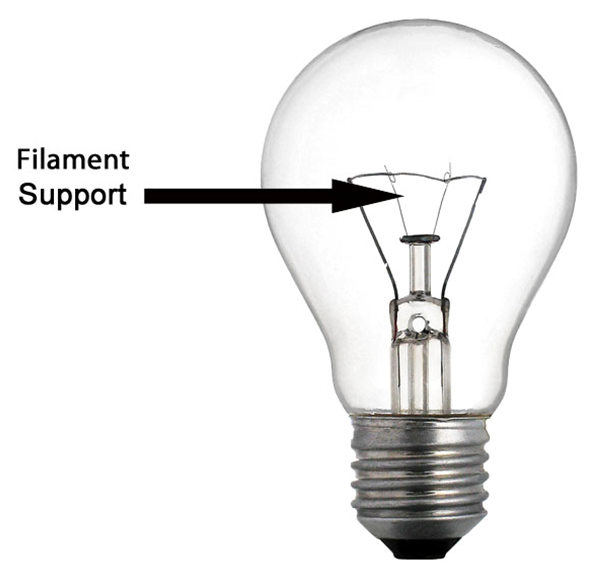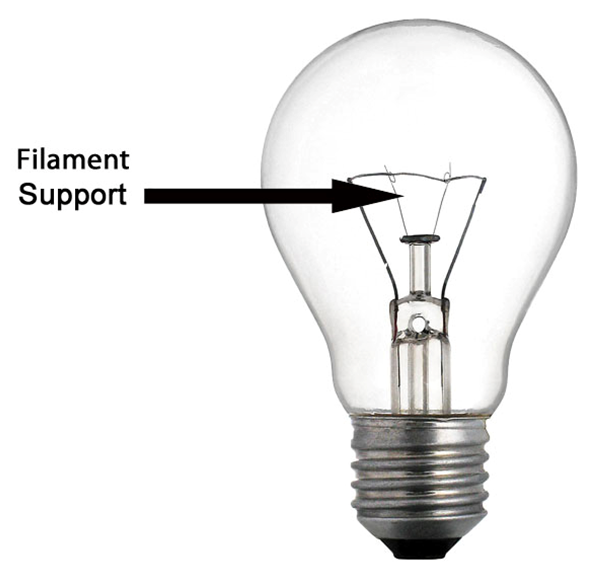
Rough Service Lightbulbs V Household Lightbulbs, what’s the difference?
*update: since this article was written, a further EU regulation starting in 2016 has banned the sale of ‘rough service’ light bulbs. These bulbs can now be replaced with LED equivalents*
Following the regulation that came into force on 1st September 2012 phasing out lightbulbs from 40w down to 15w, there has been a lot of coverage in the media surrounding rough service lightbulbs as replacements for the now phased out household lightbulb. Customers have been contacting us to find out the difference between rough service lightbulbs and a regular household lightbulb and asking if they are suitable replacements for a household lightbulb?
As well as the option to purchase rough service lightbulbs, we can supply you with more environmentally friendly options including LED bulbs, low energy halogen bulbs, and compact fluorescent energy saving lightbulbs.
It's no surprise that you may be scratching your head to the different options available when you go to buy a replacement lightbulb. To find out the features and benefits of each technology you can visit our “Low energy Zone” that has video tutorials explaining the differences between each category of bulb.
We have read most of the media coverage on rough service lightbulbs and thought that now would be a good time to explain the differences between both light sources so that consumers can make an informed decision.
What are Rough Service lightbulbs?
There are several descriptions that lamp manufacturers give to rough service lightbulbs, shock resistant, industrial, centra, rough construction, and reinforced construction, they all refer to the same lightbulb type. Rough service lightbulbs where originally developed for use in environments were there was vibration or mechanical shock when a regular household lightbulb did not have a robust construction to suit the conditions that it was being used in. Examples of applications for rough service bulbs are hand held inspection lamps, oil rigs, automotive workshops, in engineering workshops for bulbs on lathes and milling machines, and outside lighting on building sites.
Technical
The main difference between a rough service lightbulb and a regular household lightbulb are the filament supports. In the diagram below you can see what a filament support is, its simply the wire that holds the lightbulb filament in place. On a regular household lightbulb there are usually two filament supports on a rough service lightbulb there are up to nine filament supports.
A rough service lightbulb will also have a longer life filament , rough service lightbulbs have a life of up to 2,500 hours as opposed to a regular household lightbulb that has a life of 1,000 hours. As there is more to manufacturing a rough service lightbulb its inevitable that they cost a little more than a regular lightbulb.
Household light bulbs including rough service light bulbs are available in a range of wattages, cap fittings and colour finishes such as clear or pearl.
Environment
This is where it gets a little tricky, so far we have compared rough service lightbulbs to regular household lightbulbs, however environmental considerations only need to be looked at when comparing a rough service bulb to a compact fluorescent energy saving lightbulb that replaces them.
There are certainly energy saving benefits to a compact fluorescent energy saving lightbulb when compared to a rough service lightbulb, they last four times as long and can offer up to 80% saving on electricity.
So compact fluorescent bulbs will save money on your electricity bill if used instead of a regular household lightbulb or rough service lightbulb but are they better for the planet. No!
Compact fluorescent bulbs contain many elements including mercury. Mercury (Hg) is a liquid metallic element that is highly toxic. Excess amounts of mercury can lead to digestive problems, abdominal cramping, ulcers and kidney disease. The Environmental protection agency in the US allows only 2 parts per billion of inorganic mercury in drinking water.
Currently there is no legislation in place in the UK for consumers to dispose of compact fluorescent bulbs in lamp recycling bins so they end up in our household rubbish which ends up in landfill sites around the country which means that mercury can potentially get into our water table.
A regular household lightbulb or rough service bulb only contains glass, steel and tungsten wire all of which can end up in our landfill sites without any impact on the environment.
These are all additional considerations that need to be taken into account when buying a replacement lightbulb.



